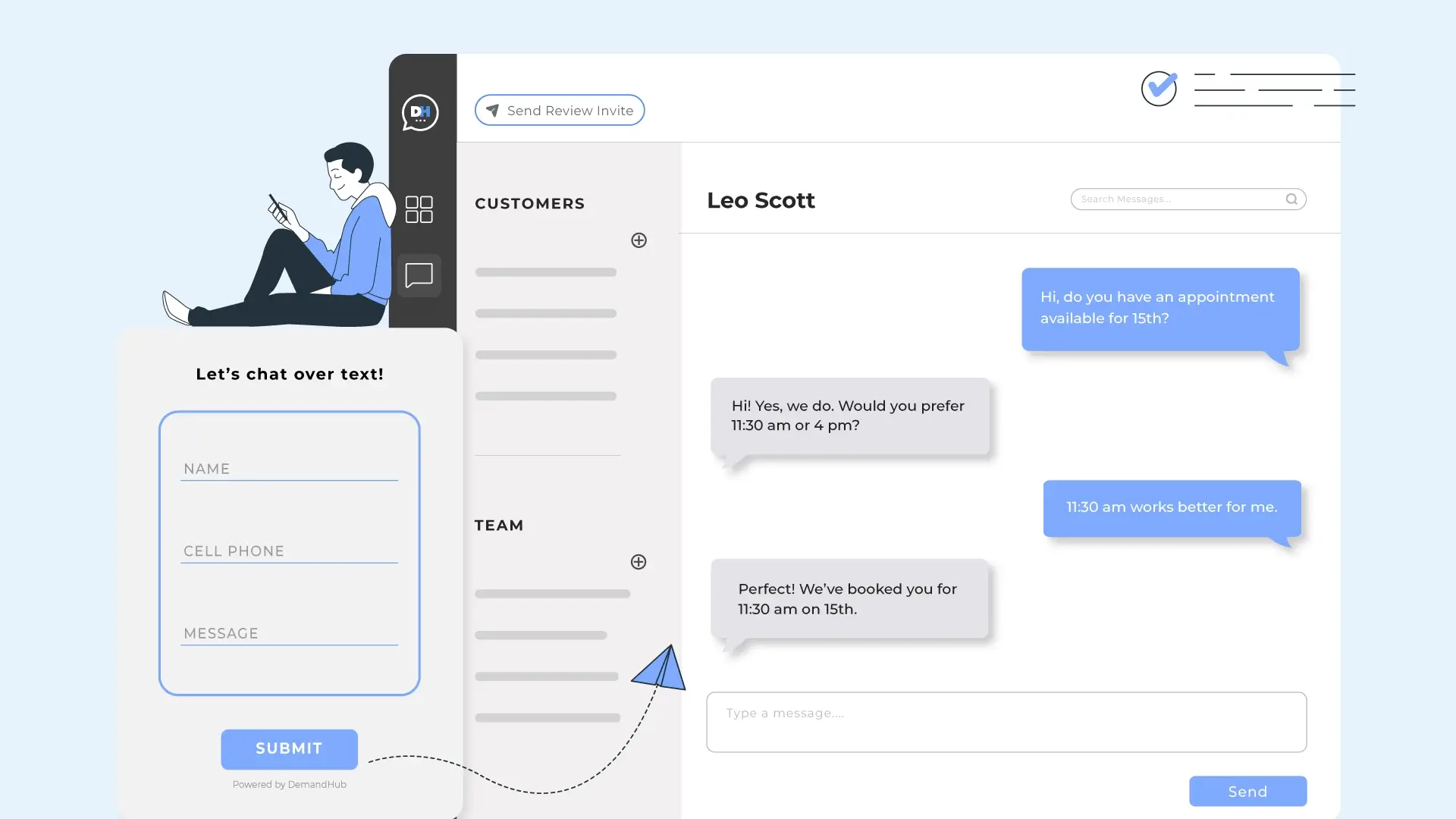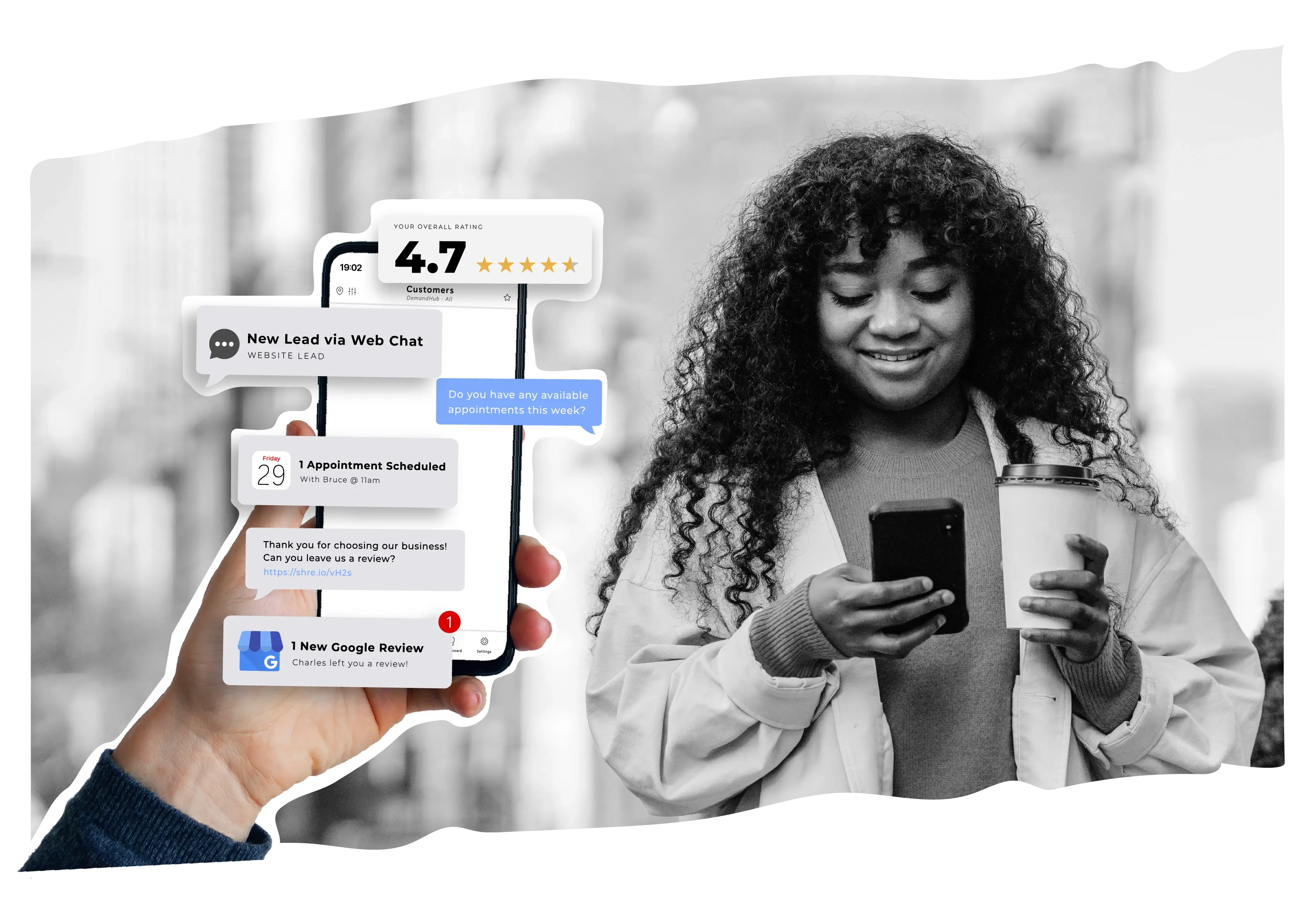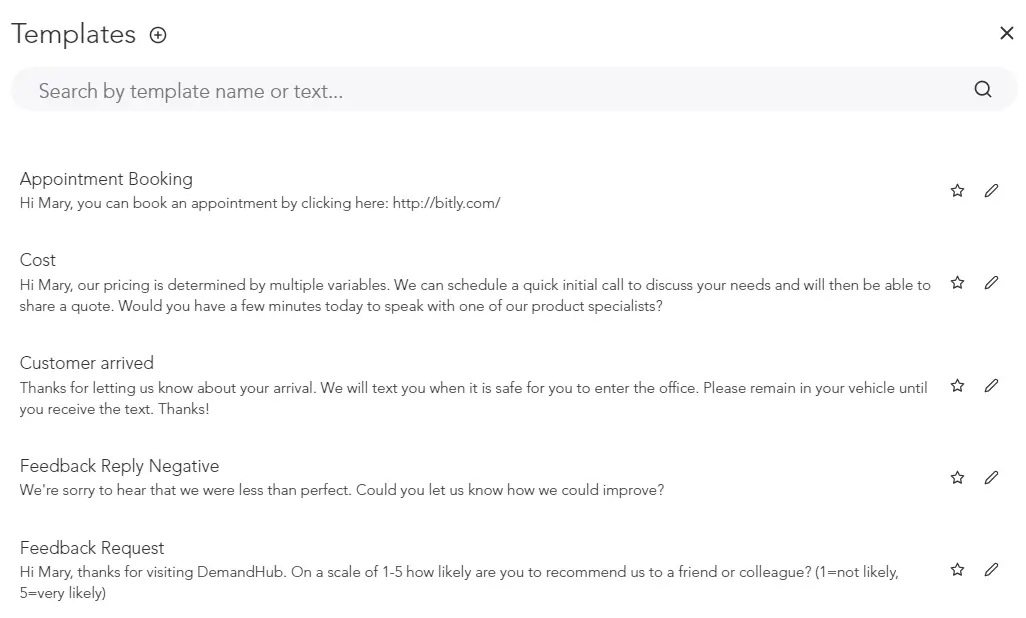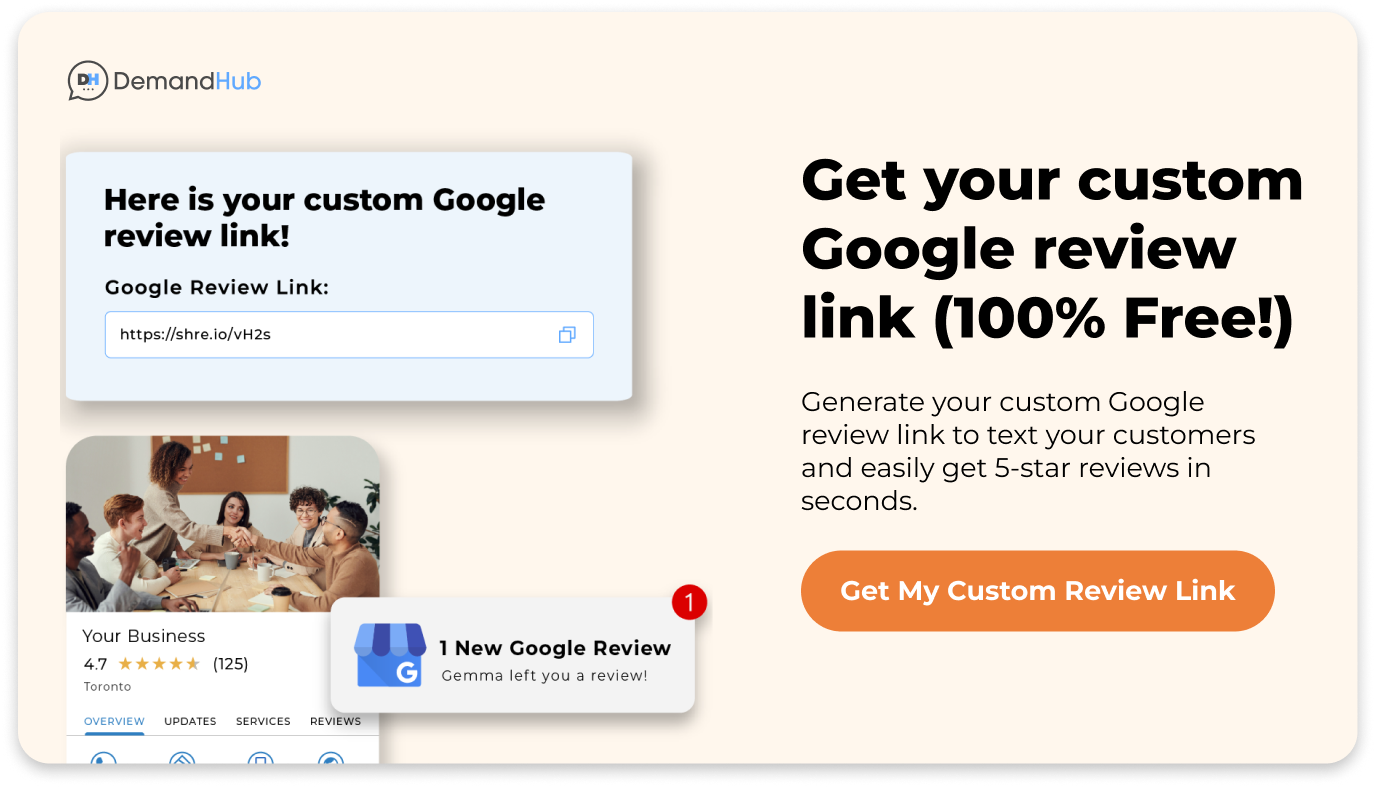An Ultimate Guide to Web Chat for Businesses

Are you struggling to capture leads effectively and engage with your customers in real-time? You’re not alone. Many businesses are in the same boat.
Businesses that respond within an hour are almost 7X more likely to have fruitful conversations with decision-makers. And fast responders win up to 50% of sales.
Customers want speed and convenience. And Web Chat is just that. It enables real-time customer engagement, virtual consults, and even bulk lead texting. This tool is set to redefine customer engagement and skyrocket conversion rates.
In this comprehensive web chat guide, we will explore the following:
- Web Chat’s unique ability to convert every online message into a text.
- How it’s changing the way businesses communicate with their customers.
- How Web Chat improves lead quality and provides unparalleled convenience for businesses and customers.
- What Is Web Chat?
- Why Is Web Chat Essential For Online Businesses?
- How Web Chat Helps Your Business?
- Best Practices For Implementing Web Chat
- What Does Success Look Like with Web Chat?
- How Web Chat Integrates With Other Systems?
- How to Choose the Best Web Chat Platform For Your Business?
- Use DemandHub Web Chat Tool For an Outstanding Customer Journey
- Frequently Asked Questions About Web Chat
What Is Web Chat?
Web chat is a tool that enables communication on a website. It can take various forms, including live chat, chatbots, and text-based Web Chat. The communication can be real-time or not, depending on the specific tool.
It’s important to note the differences between live chat, Web Chat, and chatbots:
Live Chat
Live chat software is a real-time communication tool found on websites. It requires an immediate response from the business.
When a customer starts a live chat, a customer service representative responds instantly to answer questions, resolve issues, or provide assistance. Live chat is designed to simulate an in-person conversation as closely as possible.
It is most effective when customers need immediate assistance or when they’re making a purchase decision.
Web Chat

Web Chat allows customers to interact with businesses directly on their websites. But it’s more flexible and customer-centric than live chat.
When customers initiate a Web Chat, they provide their name and phone number. The business can then respond conveniently via SMS. It effectively turns the website into a hub for text-based communication.
This allows for ongoing interaction that caters to the customer’s convenience, even after they’ve left the website. It’s beneficial for lead generation, capturing potential lead contact details at the start of the engagement.
With Web Chat, businesses have a direct line of communication with potential leads. This results in enhanced engagement, support, and conversion opportunities.
In summary, Web Chat and live chat are both used on websites for contact. However, Web Chat is more flexible and allows ongoing, text-based customer support. Whereas live chat is real-time and requires immediate responses.
Chatbots
Chatbots are automated systems to simulate human conversation. They can be used in both Web Chat and live chat contexts. Chatbots can answer common questions and guide users through processes. You can also use chatbots to automate tasks like booking appointments or ordering products.
They can provide 24/7 assistance and handle multiple chats at once. However, they may be unable to handle complex queries or provide the same personalized service as a human representative.
Why Is Web Chat Essential For Online Businesses?
Businesses are constantly seeking creative ways to connect with their customers. Web Chat has emerged as a vital tool in this quest, providing a real-time, interactive communication platform.
But why exactly is Web Chat so essential for online businesses? The answer lies in its ability to meet the evolving expectations of modern consumers who demand instant responses and seamless interactions.
Web Chat allows businesses to provide immediate assistance, answer queries, and resolve issues in real-time.
The result: improved customer satisfaction and higher conversion rates.
How Web Chat Helps Your Business?
Real-time customer messaging via Web Chat offers numerous benefits. Here are a few:
Instant Response
Customers appreciate quick responses. With Web Chat, you can provide immediate answers to customer queries, significantly enhancing customer satisfaction and loyalty.
Lead Generation
Web Chat can be an effective tool for capturing leads. When visitors initiate a chat, their contact information can be collected for future follow-up, increasing the chances of conversion.
Flexible Two-Way Communication
Web Chat allows for accessible communication even when you’re away from your desk. You can continue to answer customer queries from anywhere.
Reliable Communication
Web Chat maintains communication with customers. Even if their internet connection is unstable or they have to leave your website. You’re still connected.
Increased Accessibility
Web Chat allows customers to reach out to your business conveniently, making it more accessible and customer-friendly.
Improved Customer Service
Real-time communication enables you to address customer issues promptly. This results in enhanced customer service and a positive brand image.
Competitive Advantage
Offering Web Chat can give businesses a competitive edge. It shows that a company is customer-focused and great at providing excellent service.
Enhanced Sales
With real-time help and tailored suggestions, you can guide customers through their purchase process. This can boost conversions and sales.
Backup Tool
Web Chat serves as an excellent backup tool. Combined with live chat and chatbots, it ensures you’re always reachable for your customers.

Best Practices For Implementing Web Chat
Implementing Web Chat requires careful planning and execution. Start by defining your goals and how Web Chat can help achieve them. Then, choose a Web Chat platform that fits your needs and budget.
Ensure it integrates well with your existing systems and website. Finally, train your team to use the tool effectively and provide excellent customer service.
Designing an Effective Chat Widget
An effective chat widget is user-friendly and visually appealing. It should be easy to find but not intrusive. Customize the design to match your brand’s look and feel. Make sure it’s mobile-friendly, as many customers will access your site via smartphones.
Consider adding features like automated greetings or the ability for customers to rate their chat experience.
Training Chat Agents For Customer Service Excellence
Training is a must for customer service excellence. Equip your chat agents with product knowledge and train them in messaging skills. They should know how to empathize with customers and resolve issues efficiently.
Regularly update their training to keep them abreast of product changes or new customer service strategies.
Managing Web Chat Volume and Response Time
Managing Web Chat volume and response time can be challenging. Use analytics to understand peak times and staff accordingly. Use chatbots to handle simple queries during high-volume periods.
Aim to keep response times short, as customers prefer quick replies. According to Convolo, responding within a minute can result in a 391% increase in conversions. Monitor these metrics and adjust your strategies as needed.
What Does Success Look Like with Web Chat?
Measuring success with Web Chat involves tracking specific metrics and analyzing customer feedback. It’s about understanding how well your Web Chat is performing and how it’s impacting your customer experience and business goals.
Which Metrics Matter For Web Chat?
There are several key metrics to track to measure the effectiveness of your web chat, such as:
- response time,
- chat duration,
- conversion rate, and
- customer satisfaction score.
Response time measures how quickly your team responds to customer inquiries. Chat duration indicates the length of your chat interactions.
Conversion rate shows the percentage of chats that result in a desired action, such as a purchase or a sign-up. Lastly, the customer satisfaction score provides insight into how happy customers are with their chat experience.
How Important Is Customer Feedback and Satisfaction?
Analyze customer feedback to understand how well your Web Chat is doing. This can be done through post-chat surveys or by directly asking customers for feedback. Look for trends in the responses.
Are customers generally satisfied with the service they’re receiving? Are there common issues or complaints? This feedback can provide valuable insights for improving your Web Chat service and overall customer experience.
How Web Chat Integrates With Other Systems?
Integrating Web Chat with other systems can streamline your operations and provide a more cohesive customer experience. Let’s explore how Web Chat can work seamlessly with your CRM and analytics tools.
How Does Web Chat Connect With Your CRM?
Web Chat and CRM integration can be a game-changer. When your Web Chat is connected to your CRM, all chat interactions can be automatically logged in the customer’s profile.
Your team can access all past interactions, providing valuable context for future conversations. It keeps all customer data in one place.
Centralizing data simplifies the management of customer information. It also helps in analyzing customer behavior and preferences.
What Role Does Analytics Play in Web Chat?
Web Chat analytics and reporting tools provide valuable insights into your chat performance. They can help you track key metrics like response time, chat duration, and customer satisfaction. These insights can guide your team in improving chat interactions, enhancing customer service, and ultimately driving business growth. So, you can make informed decisions and optimize your Web Chat strategy.
How to Choose the Best Web Chat Platform For Your Business?
Choosing the right Web Chat platform for your business involves considering several key features:
1. Visitor Engagement
Web Chat must engage website visitors. For example, the chat widget can pop up and greet visitors, letting them know help is available if needed.
2. System Integration and Seamless Implementation
The Web Chat platform should integrate seamlessly with your existing website and software. This ensures the chat tool works effectively with your current systems. A straightforward setup process can save you time and effort.
3. Customization
The software should be customizable to suit your specific needs. Ask yourself. Can I customize the web chat widget to match my website’s design? Does it support multiple locations or websites? Can it show agent names and pictures to make us appear more approachable?
4. Lead Capturing and Reporting
The Web Chat tool must be able to capture and store contact information from your site visitors for future contact. It should also provide robust reporting capabilities.
5. Reusable Templates
The Web Chat tool should allow you to create, save, and use message templates for frequently asked questions, saving your team time and effort.

6. Assign Messages to Team Members
The Web Chat platform must enable agents to pass conversations to other team members who may be more qualified to respond to specific inquiries.
7. Notifications and Attachments
The Web Chat widget must support multiple ways to alert you about new messages. This can be email, SMS, browser notifications, and smartphone push notifications.
Moreover, the Web Chat platform should support attachments. For example, images, brochures, and emojis in the conversation. considering
Considering the above features, you can select the best web chat platform for your business and enhance your customer experience.
Use DemandHub Web Chat Tool For an Outstanding Customer Journey
A robust Web Chat solution can transform how you interact with your customers. It’s not just about providing a platform for communication; it’s about enhancing the customer experience, improving lead generation, and driving business growth.
DemandHub’s Web Chat platform is designed to facilitate seamless, uninterrupted communication with your customers. It lets customers initiate a chat by providing their name and phone number. The business can then respond at a convenient time.
This flexibility ensures that communication is not limited to the customer’s time on the website but can continue even after they’ve left. It provides a more comprehensive and satisfying customer experience.
With DemandHub, you’re not just responding to customer inquiries but building relationships. So why wait? Get started with Web Chat for your business today.
Frequently Asked Questions About Web Chat
What Is Web Chat?
Web Chat tool lets customers interact with businesses on their websites. Customers provide their names and phone number, and businesses respond via text when convenient. This tool supports ongoing communication, captures lead details, and enhances customer engagement and support.
How Does Web Chat Work?
Web Chat works through a chat widget on a website where customers can initiate a conversation. Here’s a simple step-by-step process:
- A customer visits a business’s website and sees a chat widget, usually located at the bottom corner of the page.
- The customer clicks on the chat widget and is prompted to enter their name and phone number to start a conversation.
- Once the customer sends a message, the business receives a notification.
- The business can then respond to the customer’s query via Web Chat or text.
- The conversation can continue even after the customer has left the website, allowing for ongoing, flexible communication. This process makes Web Chat a powerful tool. It maintains customer engagement, provides support, and captures lead information effectively.
What Are the Benefits of Using Web Chat on a Website?
The benefits of using Web Chat on a website include:
- Real-time interaction
- Convenience for customers
- Improved customer engagement
- Enhanced customer support and satisfaction
- Quality lead generation and increased conversion rates
Can Web Chat Improve Customer Engagement?
Yes, Web Chat can significantly improve customer engagement. Web Chat enables businesses to engage with customers in real-time. It allows for personalized interactions, quick responses to inquiries, and the opportunity to address customer needs effectively. This level of engagement helps build strong customer relationships. It can also boost customer satisfaction and increase the likelihood of repeat business.
What Features Should I Look For in a Web Chat Solution?
When choosing a Web Chat solution, consider these essential features:
- User-friendly interface
- Customization options
- Mobile-friendly design
- Analytics and reporting tools
- Integration with other systems
- Real-time messaging capabilities
- Security and data protection measures
How Can I Train Chat Agents For Effective Customer Service?
To train chat agents for effective customer service, follow the steps below:
- Provide comprehensive product and service knowledge training to agents. It will ensure they have a deep understanding of what they are supporting.- Teach practical communication skills, including active listening, empathy, and clear and concise messaging.
- Role-play different customer scenarios to help agents develop problem-solving skills and handle challenging situations.
- Train agents on the specific features and functionalities of the Web Chat platform. It will help them navigate and utilize its capabilities efficiently.
- Implement ongoing training and coaching sessions to address any skill gaps. Reinforce best practices. Keep agents updated on any changes or updates.
- Encourage continuous learning by providing resources such as knowledge bases, FAQs, and customer support guidelines.
- Monitor chat interactions and provide feedback to agents. Highlight areas for improvement and recognize their successes.
- Foster a positive and supportive team environment that encourages collaboration and knowledge sharing among chat agents.
Investing in thorough training and development programs can empower chat agents to deliver exceptional customer service.
What Are the Best Practices For Managing Web Chat Volume?
To effectively manage Web Chat volume, consider these best practices:
- Use chat routing and queuing to distribute chats evenly among available agents.
- Implement proactive chat invitations to engage visitors and manage chat flow.
- Set realistic response time goals and ensure agents are trained to handle chats efficiently.
- Monitor chat volume and agent availability in real-time to make staffing adjustments as needed.
- Use automated chatbots to handle common inquiries and provide instant responses.
- Continuously analyze chat data to identify trends and patterns, enabling proactive measures to manage volume effectively.
How Do I Measure the Success of Web Chat Implementation?
To measure the success of Web Chat implementation, track key metrics and assess their impact on your business goals. This allows you to measure performance and make informed decisions for improvement.
Consider the following approaches:
- Response Time: Monitor the average time it takes for agents to respond to chat inquiries. Aim for prompt and efficient responses to ensure customer satisfaction.
- Chat Volume: Track the number of chats received over a specific period to measure customer engagement and demand for chat support.
- Conversion Rate: Analyze how many chats result in desired actions, such as purchases, sign-ups, or lead captures. This metric helps assess the effectiveness of Web Chat in driving conversions.
- Customer Satisfaction: Collect feedback from customers regarding their chat experience. Use post-chat surveys or customer satisfaction scores to evaluate their satisfaction level and identify improvement areas.
- First Contact Resolution: Measure the percentage of issues resolved during the initial chat interaction. Higher first-contact resolution rates indicate efficient problem-solving and customer service.
- Agent Performance: Assess agent performance by tracking average handling time, customer ratings, and chat quality. This helps identify top-performing agents and areas where additional training may be required.
- ROI and Cost Savings: Evaluate the return on investment (ROI) and cost savings achieved through Web Chat. Compare the expenses of implementing and maintaining Web Chat with the benefits gained. For example, increased sales, reduced support costs, or improved customer retention.
Assess the effectiveness of Web Chat by monitoring these metrics. It will also help you make data-driven decisions to optimize your customer support strategy.
Can I Integrate Web Chat With My CRM System?
Yes, Web Chat can be integrated with CRM (Customer Relationship Management) systems. This integration allows seamless data synchronization and a unified view of customer interactions.
Are There Any Privacy and Security Considerations For Web Chat?
Yes, privacy and security considerations are essential for Web Chat. Here are some key aspects to consider:
- Data Encryption: Ensure the Web Chat platform uses secure protocols like HTTPS to encrypt data transmitted between the customer’s browser and the server. This protects sensitive data from unauthorized access.
- Data Storage and Retention: Define clear policies regarding the storage and retention of chat data. Determine how long chat transcripts and customer information will be stored. Establish procedures for secure data disposal when no longer needed.
- Customer Consent: Obtain customer consent to collect and store their personal information. Clearly communicate how you will use the data and assure customers of its confidentiality.
- Third-Party Compliance: If you use a Web Chat service from a third-party vendor, ensure they adhere to relevant privacy and security regulations, such as GDPR (General Data Protection Regulation) or CCPA (California Consumer Privacy Act).




